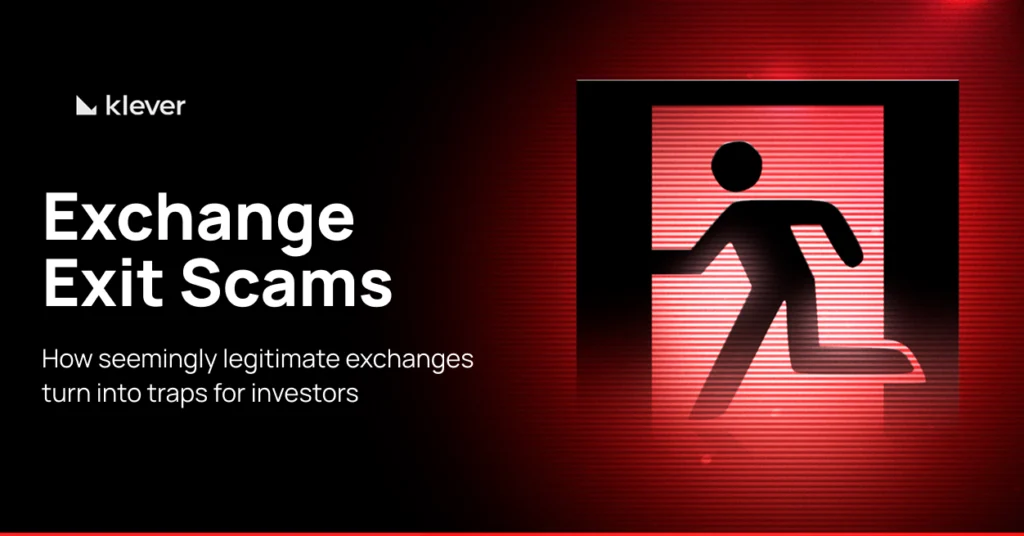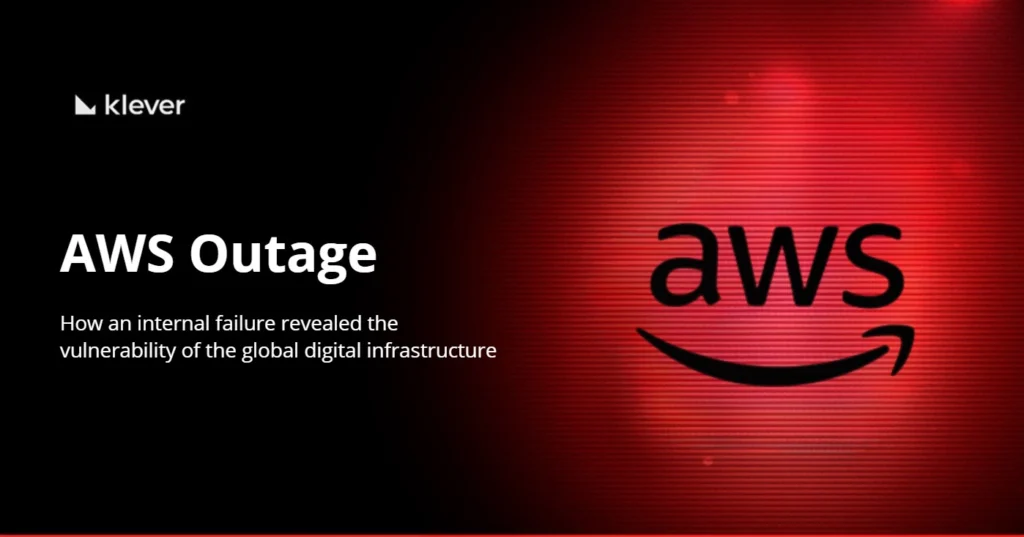
Imagine waking up to find that the exchange where you stored your crypto — and trusted for months — has simply vanished. No warning, no support, no refunds. The website is offline, social media accounts deleted, and wallets emptied.
This is the real nightmare faced by thousands of investors who fall victim to exit scams, one of the most devastating schemes in the crypto world.
Unlike hacker attacks, this type of scam is built from the inside: the operators themselves create a façade of credibility, attract millions in deposits, and once they reach their target volume — they disappear.
In this article, you’ll understand how these scams happen, why even major exchanges have collapsed, and what you can do to protect your assets safely — starting with self-custody.
What Is an Exchange Exit Scam?
An exchange exit scam happens when a crypto exchange or trading platform suddenly shuts down and disappears — taking users’ funds with it.
Unlike hacks or bankruptcies, these scams are intentional: the operators plan from the start to collect deposits, restrict withdrawals, and vanish once enough money has been gathered.
Such incidents remain one of the most damaging fraud types in crypto. According to Fraud.net and TechForing, exit scams thrive in unregulated environments where anonymity and lack of oversight make recovery almost impossible.
How an Exchange Exit Scams Unfolds
- Launch & Marketing Hype
The exchange appears legitimate, offering low fees, big bonuses, and influencer endorsements to attract deposits. - Trust-Building Phase
Users can trade and withdraw small amounts, reinforcing credibility and social proof. - Accumulation & Withdrawal Freeze
Once deposits peak, withdrawals suddenly fail. The platform cites “maintenance” or “liquidity issues.” - Disappearance
Websites go offline, social accounts are deleted, and wallet addresses are emptied. - Aftermath
Law enforcement may investigate, but cross-border anonymity often leaves victims with no compensation.
Real-World Cases of Exchange Exit Scams
- BKEX Exchange: The “Freeze” That Never Ended
In May 2023, BKEX, based in the British Virgin Islands, suspended all user withdrawals, claiming to be cooperating with authorities in a money laundering investigation.
The official statement promised operations would resume after “collaboration with authorities,” but as of 2025, the platform remains inactive — with user funds locked and no published proof of reserves.
Reports from Finance Magnates and analyses from BrokerHivex revealed that BKEX operated under limited licensing, showed suspicious trading volumes, and lacked transparency regarding its cold wallets. Users reported no customer support and complete loss of access to their assets.
Key Lesson: Even large exchanges can become high-risk if they don’t offer independent audits, proof of reserves, or clear jurisdiction. Extended freezes and vague explanations (“maintenance,” “investigation”) are major red flags for a potential exit scam.
- QuadrigaCX (Canada): The Founder’s Mysterious Death and the Empty Wallets
QuadrigaCX, once Canada’s largest exchange, collapsed after the sudden death of its founder Gerald Cotten in December 2018 in India.
The company claimed Cotten was the only one with access to the cold wallets, leaving 115,000 customers unable to access CA$250 million (about US$190 million).
However, an audit by Ernst & Young (EY) revealed that the wallets had been empty since April 2018 — eight months before his death.
Subsequent investigations uncovered possible Ponzi-like practices and misuse of customer funds for personal trading.
The case became one of the biggest scandals in crypto history, cited by outlets such as BBC, Sky News, and Wikipedia as a textbook example of total governance and custody failure.
Key Lesson: When an exchange depends on a single person or lacks proper audits, user funds are at complete risk. QuadrigaCX highlights the critical need for ongoing transparency, shared governance, and verifiable on-chain proof of reserves.
- Fake Exchanges (2024–2025): Unreal Promises, Fake Profits, and Sudden Disappearances
2025 reports from TechForing and Sumsub identified dozens of fraudulent exchanges created to steal deposits from beginner investors.
Many of these platforms — hosted on newly registered domains and fake social media accounts — promised returns of up to 200% per month, welcome bonuses, and 24/7 support.
After only a few months of operation, users began reporting blocked withdrawals, offline websites, and total loss of funds.
Common warning signs included:
- No legal registration or recognized regulation;
- Fake proof of reserves with manipulated screenshots;
- Use of fake influencers or cloned profiles on X/Twitter and Telegram;
- Exaggerated promises of fixed and fast profits.
Key Lesson: Before investing, research the platform’s reputation, verify its domain, public audits, and real founders. No legitimate exchange guarantees fixed or monthly returns.
Relevant Data: Global losses from exit scams and rug pulls surpassed US$4 billion, according to the Sumsub 2025 report.
Exit Scams vs. Rug Pull: What’s the Difference?
| Type | What Happens | Typical Victims | Recovery Chance |
| Exchange Exit Scam | A custodial platform vanishes with deposited assets | Traders using centralized exchanges | Very low |
| Rug Pull | Developers remove liquidity from a token or DeFi pool | Token buyers & DeFi investors | Moderate if tracked early |
| Fake Exchange Scam | Impersonates real platforms to steal crypto directly | New or retail investors | Almost none |
Understanding these differences helps users identify which custodial risks apply to each crypto interaction.
Common Red Flags Before an Exchange Exit Scams
- Withdrawal delays — repeated “technical issues” or “KYC verification” excuses.
- Anonymous team — founders with no public background or verifiable credentials.
- No proof-of-reserves — lack of verifiable audits or wallet transparency.
- Too-good offers — high yields, instant bonuses, or celebrity shilling.
- Sudden platform maintenance — prolonged downtime before disappearing.
- Unregulated jurisdiction — offshore entities with no legal accountability.
Why Exchanges Are Prone to Exit Scams?
- Centralized custody: Users don’t hold private keys — the exchange does.
- Regulatory loopholes: Many exchanges operate from weakly supervised jurisdictions.
- Cross-border anonymity: Funds can move across chains and mixers instantly.
- Psychological trust: Users equate slick UI and marketing with legitimacy.
How to Protect Yourself From Exchange Exit Scams
- Use reputable exchanges — platforms with licenses, audits, and proof-of-reserves dashboards.
- Test withdrawals — always verify that your funds can be withdrawn before depositing large amounts.
- Don’t store large balances on exchanges — move them to self-custody wallets like Klever Wallet.
- Research the team — verify founders’ names, LinkedIn profiles, and company registration.
- Read user feedback — social media and review platforms often reveal early red flags.
- Stay updated — follow credible crypto news sites for scam alerts.
Self-Custody: The Safest Path with Klever Wallet
Exit scams on exchanges reveal a clear paradox in the crypto economy: many investors seek financial freedom but still hand over control of their assets to centralized intermediaries.
As long as exchanges continue to be used as “wallets,” the risk of total loss will remain.
True security in crypto comes from self-custody — when you hold your private keys and decide the fate of every transaction.
With wallets like Klever Wallet, self-custody becomes simple and accessible:
- Maintain full control over your crypto assets;
- Store, send, and stake securely across multiple blockchains;
- Protect your funds with audited, non-custodial technology;
- Access DeFi, NFTs, and tokens from various blockchains in one app.
If your goal is true financial freedom, start with self-custody.
Transfer your assets to a wallet where you control the private keys — and therefore, your financial future.




